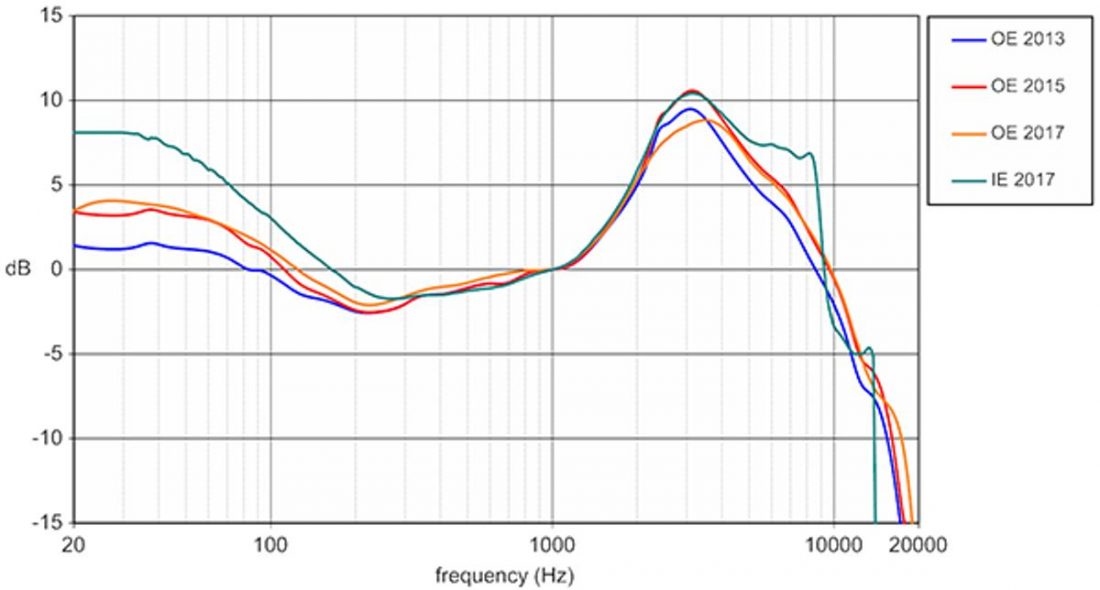castleofargh
Sound Science Forum Moderator
- Joined
- Jul 2, 2011
- Posts
- 10,446
- Likes
- 6,065
1/ The Harman curve for headphones was the result of a dozen different papers over several years, not 10 trained listeners(which were their own people). the link to his blog shows the beginning of their work on headphones, just looking at more recent articles on the same blog would clearly show that. They tested for ages, on different continents, they gave people some simplified bass and treble EQ to play with, they tested some objective hypothesis, they tried to simulate one headphone on another one to remove the risk of people recognizing the headphone or being biased in some way by the comfort or weight... I think the first target came out from 250 listeners, and the all series of experiments probably goes beyond a thousand listeners.I am very puzzled about "Harman target curve" - to me that sounds really bad and I am not sure why is so popular.
I have applied compensation curves with AutoEQ and various results from here: https://github.com/jaakkopasanen/AutoEq/tree/master/results
I have used Grado SR60i, AKG K701, HIFIMAN Deva Pro for those tests. The results were strange with all of them, for me mids were too strong and I was bothered especially by the high-end loss.
I know about the history, but I am not convinced of the "science" behind it. Mainly because is based on "a panel of 10 trained listeners" that were not specified.
Education and genre preference has a lot to do with how music is perceived by the brain. All those "listeners" seemed to prefer the female voice and really hated the cymbals/high hat.
To me that's not good at all...
Am I alone in this?
It's by far the most involved and solid series of studies on a preferred headphone FR that were publicly(at least for a time) available.
2/ The result is a statistical one. Nowhere did they claim that it would or should please you or me in particular. When cool dude Olive discussed one of their headphone following the target pretty tightly, he had stats on how many would prefer it over something else, and that was 64%. It leaves plenty of room for you and your personal taste.
3/ The curve is from a specific measurement rig(that basically nobody posting graphs on this forum is using), and Autoeq is an aggregate of graphs that Jaako collected online. So it wouldn't be at all surprising to find out deviations from target of varying amplitudes on most compensations. It is also going to be the case for most reviewers showing the Harman curve or using it to compensate their graphs. They may, or may not use the right curve for their system. Even then, the pairs of headphones you're using probably has a few dB here and there that differ from the pair measured(+pad wear+...).
4/ Listening level(cf. equal loudness contour), age and hearing damage.
5/ Just personal taste from a lifetime of more or less conventional experiences.
I am curious... Would it be possible to know what's your age (as a range if you want)? Maybe that makes the difference?
I'm 45 and I approve this message.. I mean, my preferred response is pretty much right between DF and Harman, so both were a very good starting target for me that I would just fine-tune with EQ. The amount of bass I like, changes greatly depending on the type of headphone and I'm guessing the quality of the seal on my head(Something clearly mentioned by Olive). I have some intuition that the wider the driver, the less I feel the urge to get boosted low freqs(for whatever reason).
All in all, I guess you can interpret my case as validation that the Harman curve is pretty good for me, and also that it isn't. I'm not difficult.























